Today we got on a boat and motored out with the NPS to Santa Cruz Island in the Channel Islands.
The boat ride is about an hour, and we got an extra bonus on the way: wildlife. The captain pointed out sea lions, whales, and dolphins. We saw three or four Blue Whales--hard to tell how many, as they move around, of course. None surfaced completely, but they were spouting, and they came up to show us their backs at least. That's more whales than we saw one year when we took a whale watching trip out of San Francisco!
The school of dophins was amazing. I've seen dophins before, but never in this number. A huge group of them followed the boat for awhile, leaping over and over. Quite a sight! A real treat.
On the island, we were given a brief overview (Don't feed the ravens or foxes. The ravens can open zippers, so if you put your backpack down, put it face down. The foxes will jump right up on the tables and steal your sandwhich while you reach for a soda. Don't miss your boat; all three returning boats today are completely full, so you will end up an overnight camper, like it or not!), and then we were turned loose to explore.
Tim and I hiked out to Potato Bay, ate lunch there, then came back along the coast trail. The whole walk was about 6.5 miles. We took the posted advice and went clockwise, to avoid "a steep climb." The trails were both marked "moderate," and, for the most part, I would agree with that, but there were two really steep descents (would have been ascents going the other way), which were not only steep, but were also in pretty bad shape. I would definitely call both of those "difficult." You can see our route on the map here.
We saw a lot of butterflies along the way--mostly checkered skippers, which appeared to be much smaller than the ones we have at home--but also some fritillaries, Cabbage Whites, and a couple of Western Pygmy Blues. In addition to the ravens, we also saw an osprey (confirmed later by rangers; there is an osprey nest on one of the other islands, and that osprey has been seen hunting where we saw it). We did not see any Bald Eagles or the Island Scrub Jay (you have to take a much longer, more arduous hike to get to jay territory.
)
We also saw the Island Fox--hard not to, as they hang out in the campground and picnic areas like squirrels. This fox is very small--about the size of a house cat--evolved that way on the island. We were informed by a display in the visitor's center that plant and animal species do tend to evolve to be either smaller or larger on islands, due to presence (or absence) of resources and predators. The Island Fox is one of many species (200+, I believe) that live only on the Channel Islands and nowhere else in the world. (The Island Scrub Jay, bigger than its mainland compatriot, is another.)
The fox was hunted nearly to extinction by a bunch of Golden Eagles who took up residence on the islands in the 1990s. The remaining foxes (less than 100) were captured and put into a captive breeding program, and the Golden Eagles were also captured and removed from the islands. Bald Eagles were re-established on the islands (they do not prey on the foxes). By about 2013, the released fox population had grown to about 300.
I asked a ranger; they don't know exactly how many there are now, but more than 400. It was kind of funny to see them prowling around the campground--no fear of humans, obviously. They may be small and apparently tame, but they do not look like pets; I had no urge to try to make friends: they seemed to me obviously to be wild animals. (Of course, I never feel like petting squirrels, either!!!)
A bit of a glitch at the end of the outing: the return boat came motoring into the cove, and then suddenly stopped and dropped anchor 50 yards from the dock. Everyone was lined up to board, and there we were, standing around in the sun waiting. The rangers said they were not in radio contact with the boat (???!!!), but they were guessing that there was some sort of mechanical trouble. Oh, joy. Eventually, the folks on board got it fixed, and we left about half an hour late. We got one more look at a whale on the way in, and arrived back at the mainland tired but in one piece and satisfied after a good day.
For dinner, we decided to hit a traditional diner a mile or so from the hotel. This was our last true day of vacation; from here on out, it's 500 miles a day at 75 miles an hour on the freeway to get back to Amarillo for a flight Wednesday morning. Not too exciting, but worth it, for what has been a great trip!

 California, United States
California, United States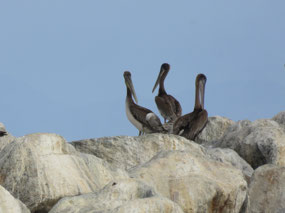
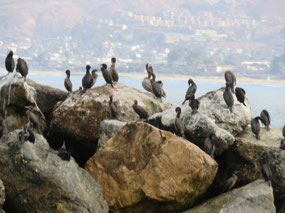
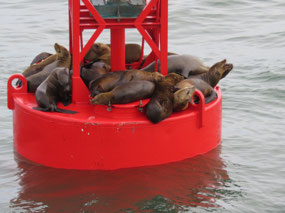
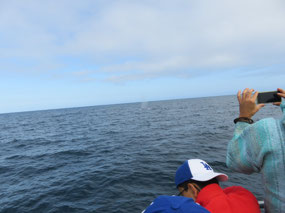


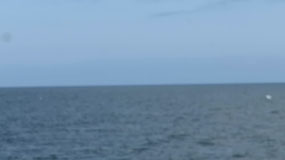
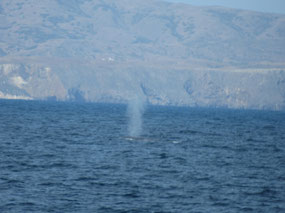
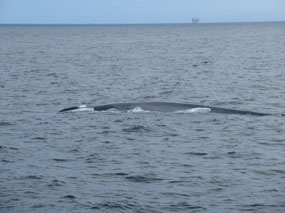

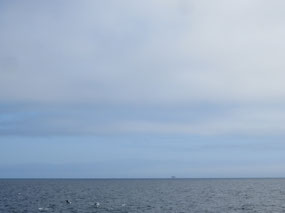
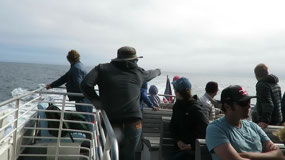
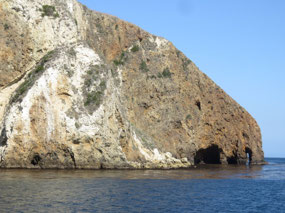
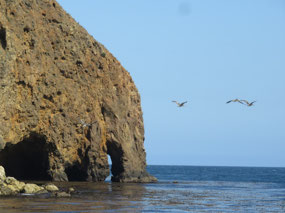

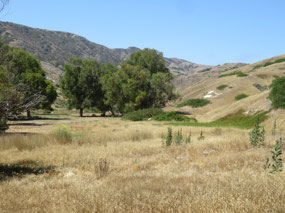
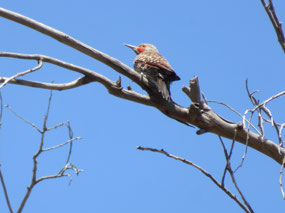
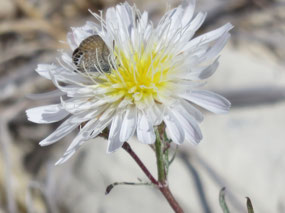
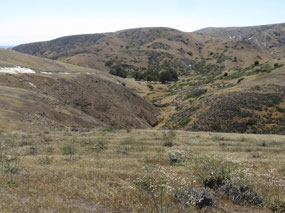

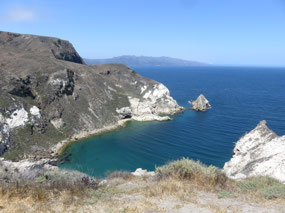
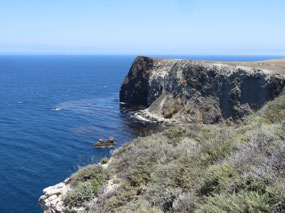
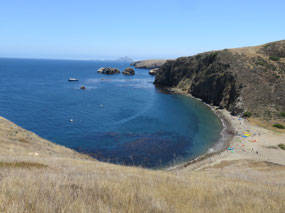

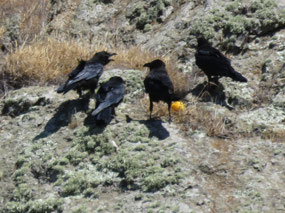

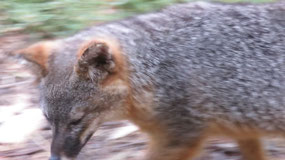
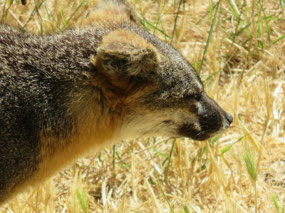
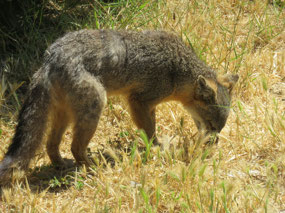
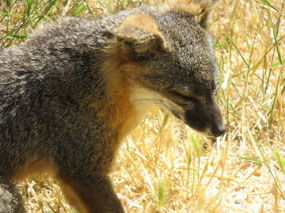
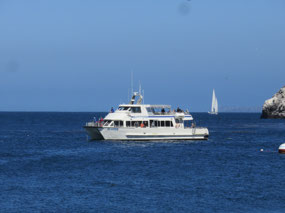
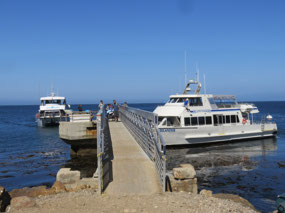
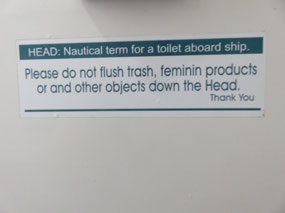
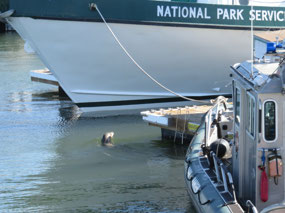
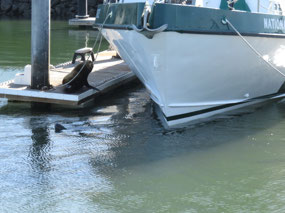
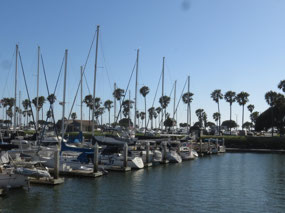
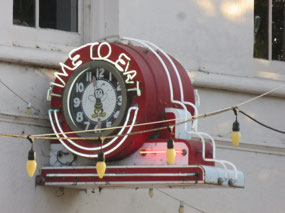
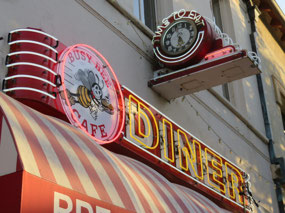
Skip
2018-07-21
Love the pelicans. Always have used them as a symbol of the English teacher because of the story that their young drink their blood. Rats that I'm missing you--heading down to San Diego tomorrow (Sun 22 July) for AP by the Sea, the fourth of my six (!) AP summer institutes.